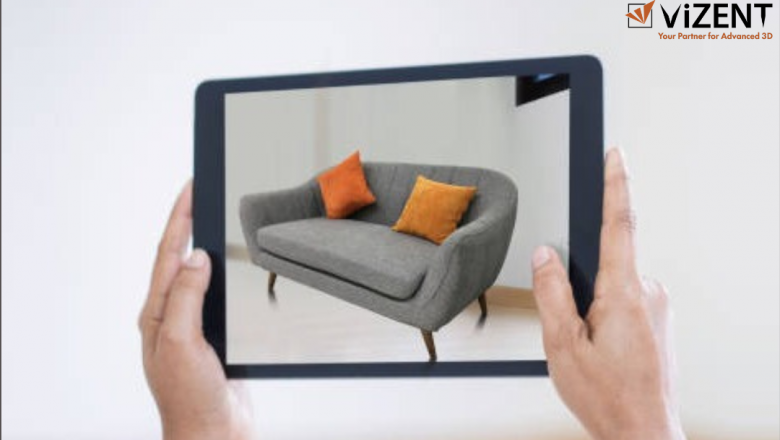views
Marketers are constantly looking for ways to captivate customers, create memorable experiences, and build deeper brand connections. One of the most revolutionary tools driving this shift is augmented reality (AR). By blending the physical and digital worlds, AR is transforming how brands interact with their audiences. Central to this transformation are augmented reality models, powered by 3D modeling services, 3D product visualization, and 3D product modeling services. These tools have enabled businesses to showcase their products like never before.
In this blog, we’ll dive into how augmented reality is shaping interactive marketing, and how brands can leverage this technology to engage, educate, and excite customers.
1. What Are Augmented Reality Models?
Augmented reality models are interactive, three-dimensional digital representations of products, objects, or environments that users can view through AR-enabled devices like smartphones, tablets, or AR glasses. These models are created using 3D product modeling services, allowing businesses to present highly detailed and realistic visuals that customers can interact with in real time.
Unlike static images or videos, AR models empower customers to rotate, zoom, and place digital products in real-world settings. For instance:
- Shoppers can interact with virtual makeup products, seeing how shades appear on their faces.
- Car buyers can examine a 3D car model from all angles before stepping into a dealership.
This immersive experience creates a lasting impression, helping brands stand out in crowded markets.
2. The Role of 3D Modeling Services in AR Marketing
To bring augmented reality to life, 3D modeling services are crucial. Professional 3D modelers use advanced tools and software to create detailed, accurate models of products or spaces. These models become the backbone of AR experiences, providing:
- Precision and realism: High-quality 3D product visualization ensures that AR models look as close to real-world products as possible.
- Customization: 3D artists can tailor models to match a brand’s identity, from textures and colors to product variants.
- Optimization: AR requires models to load quickly and perform well across devices. Optimized 3D product modeling services ensure smooth, interactive experiences.
With AR powered by robust 3D modeling, brands can create seamless and engaging interactions that customers love.
3. How Augmented Reality is Transforming Interactive Marketing
a. Product Visualization in Real Environments
Augmented reality allows customers to view products in their real-world environments through their screens. With 3D product visualization, brands can help customers make confident purchasing decisions without visiting a store.
For example:
- E-commerce: Shoppers can virtually place products like furniture, home decor, or electronics in their homes to see how they fit.
- Fashion and beauty: Virtual try-on experiences for clothes, glasses, or makeup create personalized shopping journeys.
- Automotive: Customers can explore vehicles with AR models, viewing interiors, exteriors, and customizable features.
b. Enhancing Engagement with Interactive Experiences
Static ads and traditional marketing methods struggle to hold attention in today’s fast-paced world. Augmented reality, however, creates highly interactive campaigns that engage users in meaningful ways.
Imagine walking past a store and pointing your smartphone at a window display. Instead of a regular ad, an augmented reality model comes to life, showcasing the product’s features through interactive animations.
c. Redefining Storytelling for Brands
Storytelling is a cornerstone of great marketing, and AR enables brands to tell their stories like never before. By incorporating 3D product modeling services into campaigns, companies can create immersive narratives that resonate with customers.
For instance, an AR campaign for a sneaker brand could show the journey of how the shoe was designed, the materials used, and its performance features—all in an interactive 3D space.
4. Industries Leveraging AR and 3D Product Visualization
a. Retail and E-commerce
Retailers are using augmented reality models to recreate the in-store shopping experience online. Whether it’s trying on clothes virtually or placing a sofa in a living room, AR removes barriers to online shopping.
b. Real Estate
The real estate industry benefits from 3D product visualization to offer virtual property tours.
c. Automotive
Car manufacturers are showcasing 3D product modeling services to let buyers explore car features, colors, and interiors without visiting a showroom.
d. Education and Training
Students can visualize complex concepts like anatomy or engineering in 3D, enhancing understanding.
5. Benefits of AR Models in Marketing
Augmented reality models offer several advantages that traditional marketing simply can’t match:
- Increased engagement: AR campaigns invite active participation, holding users’ attention longer.
- Reduced returns: By visualizing products in real settings, customers are more likely to make informed choices.
- Memorable experiences: AR interactions are unique and shareable, helping brands create buzz and stand out.
6. The Future of AR and 3D Modeling in Marketing
Innovations like AR glasses, 5G connectivity, and real-time 3D product modeling services will make AR marketing faster, sharper, and more immersive.
In the coming years:
- Brands will use AR to provide hyper-personalized experiences for customers.
- 3D product visualization will become a standard feature for e-commerce and advertising.
The blend of augmented reality models and cutting-edge 3D modeling services is setting the stage for a new era of interactive marketing.
Final Thoughts
Augmented reality is not just a trend—it’s the future of marketing. By combining 3D modeling services, 3D product visualization, and augmented reality models, brands can create immersive experiences that captivate customers and drive meaningful interactions. Whether you’re an e-commerce store, automotive brand, or real estate company, AR opens the door to limitless creative possibilities.
Read more :- 3D Rigging Explained: Breathing Life Into Game Characters






















Comments
0 comment